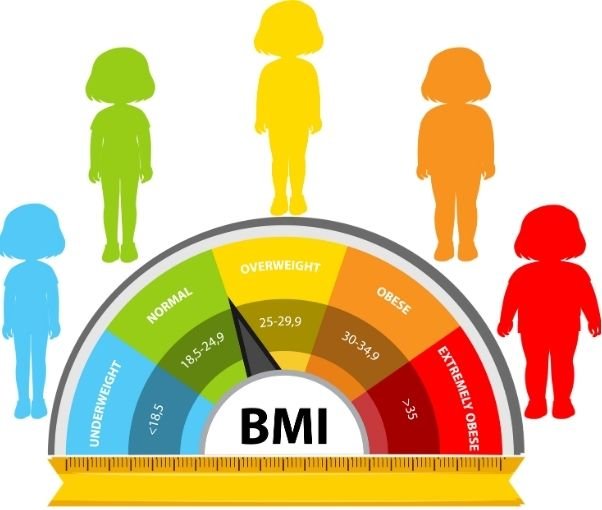
If you’re fed up with losing weight only to gain it all back, or if it feels like your weight is out of control no matter what you do, you’re not alone. Obesity isn’t just about how you look—it’s a condition that can seriously impact your health. In fact, around 400,000 Americans die each year from complications linked to obesity. One of the biggest issues tied to obesity is Type 2 diabetes, along with high blood pressure, which can lead to heart attacks, heart failure, and strokes. Conditions like sleep apnea, asthma, chronic back pain, urinary incontinence, and severe acid reflux (GERD) are often made worse by excess weight. The good news? Losing a significant amount of weight can dramatically improve—or even completely eliminate—these health problems.
When diets, medications, and exercise plans fall short, weight loss surgery could be the game-changer you need. Bariatric surgery isn’t just about losing weight—it’s about regaining control over your health by reducing your body’s ability to take in or absorb food. Typically, candidates for weight loss surgery have a body mass index (BMI) of 40 or higher—or a BMI of 35 if they also have obesity-related health issues. Even if your BMI is below 35, surgery could still be an option if you have serious health issues related to your weight and have tried other methods without success.

If you’re significantly overweight (think about carrying extra heavy luggage everywhere) and have health problems like diabetes, this might be for you .
MEET YOUR SURGEON You’ll start by meeting your surgeon to talk about your medical history and weight loss goals. Think of this as a planning session before starting a big home renovation. Together, you’ll choose the best surgery option for you.
MEET WITH CLINICAL PSYCHOLOGIST: You’ll have a chat with a psychologist to see if you’re mentally ready for surgery. This is like checking if you’re prepared to handle a big life change. They’ll also help you come up with strategies to cope with the changes after surgery.
CONSULT REGISTERED DIETITIAN: You’ll meet with a dietitian to look at your eating habits and learn about what you’ll need to eat before and after the surgery. This is like getting a new set of instructions for a different kind of fuel for your body.
The surgeon makes small cuts in your belly (think of tiny keyholes).They use special tools to remove most of your stomach, leaving a small tube shaped stomach behind.
The operation takes about 1 2 hours, and you might go home the same day or the next.
HOSPITAL STAY: You may stay in the hospital for a night or go home the same day, depending on how you feel.
DIET: Start with liquids, then move to soft foods, like going from soup to mashed potatoes, and eventually back to regular food.
ACTIVITY: You’ll need to take it easy for a few weeks, like after fixing something at home you don’t want to rush and break it again.
FULL RECOVERY: Most people feel back to normal in 4 6 weeks, but you’ll need to get used to eating smaller amounts forever.
EXPECTED WEIGHT LOSS LONG TERM: You can expect to lose about 60% of your extra weight within two years, like shedding a big winter coat you’ve been carrying around.
HEALTH BENEFITS: Along with weight loss, you’ll likely feel better physically and emotionally like a weight has been lifted off your shoulders, both literally and figuratively.







Think of your digestive system as a road. With gastric bypass , your surgeon creates a shortcut, bypassing most of your stomach and part of your small intestine, so food takes a much shorter route.
Your stomach is divided into a small upper pouch, and the food bypasses the rest of your stomach and part of your intestines, absorbing fewer calories like creating a shortcut around traffic to reach your destination faster with fewer stops.
If you need to lose a significant amount of weight and have health conditions like diabetes, this surgery might be a good choice.

Ready for Change? If you’ve tried diets and exercise but need something more, this could be the right step.
STEP 1: You meet with your surgeon, psychologist, and dietitian to discuss whether bypass is the best choice for you and to prepare for the changes.
STEP 2: The surgeon makes small cuts in your belly and creates a small stomach pouch. Then, they reroute your intestines to bypass the larger stomach, like building a new road that skips part of the highway.
STEP 3: The surgery takes about 2 3 hours, and you ll likely stay in the hospital for 12 days.
HOSPITAL STAY: You will spend 1-2 days in the hospital to recover and make sure
everything is healing well.
DIET: Start with liquids, then soft foods, like gradually retraining your body to handle
smaller meals.
ACTIVITY: You will need to take it easy for about 4 6 weeks, but most people start
feeling much better after a month.
EXPECTED WEIGHT LOSS – FAST & SIGNIFICANT: Most people lose about 60 80 % of their extra weight within 1-2 years, like hitting the fast track to weight loss.









Revision surgery is like a “do over” if your first weight loss surgery didn’t go as planned or if complications arose. It’s like going back to the mechanic for a tune up when the first repair didn’t work quite right.
This can involve fixing, adjusting, or switching to a different type of surgery if the original procedure didn’t meet your needs or caused unexpected complications.
Dr. Mutafyan specializes in a wide range of revision procedures, from modifying gastric bypass to converting lap band surgeries to other forms of bariatric surgery.
FIXES PROBLEMS: If your first surgery didn’t work or caused complications, this is your second chance to get it right. Think of it as a follow up service to get everything back on track.
TAILORED TO YOUR NEEDS: The surgeon can adjust what wasn’t working before, much like realigning a machine to improve performance.
IMPROVES RESULTS: You can often achieve better weight loss results after revision surgery, like finally getting the solution you were hoping for. This is especially true when transitioning from procedures like lap band to gastric bypass or sleeve.
ADVANCED TECHNIQUES: Dr. Mutafyan offers advanced surgical options, including robotic assisted surgery, which allows for increased precision, less recovery time, and a lower risk of complications in more complex cases
MORE COMPLICATED: Since this is a second surgery, it can be more complex than the first, like fixing something that s already been worked on before. Revision surgeries sometimes involve scar tissue and anatomical changes that make the procedure more intricate.
LONGER RECOVERY: Recovery might take a bit longer compared to your first surgery since your body has already undergone one operation.
ADDITIONAL RISKS: Because it s a second surgery, there s a slightly higher risk of complications, which is why it’s crucial to choose a highly experienced surgeon like Dr. Mutafyan , who has an exceptional track record of success with complex revision cases.
If you’ve had weight loss surgery before and didn’ t get the results you expected or experienced complications, revision surgery could help. Whether your original procedure was a gastric bypass, sleeve gastrectomy, or lap band, revision surgery can correct or enhance your initial outcome.
STEP 1: Meet with Dr. Mutafyan to discuss what didn’t work with your first surgery and what adjustments are needed. A comprehensive review of your history and goals is key to determining the best revision strategy.
STEP 2: The surgery could involve adjusting the previous procedure or switching to a different type of weight loss surgery. It s like redesigning a system to make it work better for you.
STEP 3: Depending on what s being revised, the surgery can take anywhere from a few hours to longer, especially for more complex revisions like distalization or converting lap band to gastric bypass.
SIMILAR TO FIRST SURGERY: Recovery will depend on the type of revision, but it s generally similar to your original surgery. Due to the nature of it being a second procedure, you may need a bit more healing time compared to your first surgery.
QUICKER WITH ROBOTIC SURGERY: Dr. Mutafyan uses advanced robotic techniques when appropriate, which can result in a quicker recovery and fewer complications.
IMPROVED RESULTS: After revision surgery, you can expect better weight loss results. Whether it s converting from a less effective procedure or fixing complications, this second chance can lead to the outcomes you were hoping for the first time around.







Robotic surgery is revolutionizing weight loss procedures, and Dr. Mutafyan is at the forefront of this cutting-edge technology. With the help of robotic-assisted surgery, Dr. Mutafyan offers precision, safety, and faster recovery times for patients seeking effective, long-lasting weight loss solutions. Imagine achieving your goals with less pain and a quicker return to your everyday life—robotic surgery makes that possible!
Think of robotic surgery like the ultimate assist for your surgeon. While Dr. Mutafyan is in full control, the robotic system provides enhanced precision, control, and 3D visualization, allowing for more accuracy during complex bariatric procedures. It’s like having the best set of tools at your surgeon’s fingertips!
With robotic technology, Dr. Mutafyan can perform a variety of minimally invasive procedures, leading to smaller incisions, reduced post-op pain, and a quicker recovery. That means you can get back to living your life faster—without compromising on results.
In this procedure, a large portion of your stomach is removed, leaving behind a smaller, sleeve-shaped stomach. With the help of robotic technology, Dr. Mutafyan can perform this procedure with precision, allowing for quicker recovery and improved long-term weight loss outcomes.
If you’ve already undergone bariatric surgery and didn’t get the results you wanted or experienced complications, Dr. Mutafyan offers robotic revision surgeries. From lap band conversions to gastric sleeve or bypass revisions, the use of robotic tools allows for better handling of scar tissue and more delicate adjustments.
It all starts with a one-on-one consultation with Dr. Mutafyan, where you’ll discuss your goals, medical history, and the best procedure for you. Whether you’re looking for a first-time bariatric surgery or a revision, Dr. Mutafyan will walk you through how robotic surgery can offer a superior solution.
Robotic surgery is ideal for individuals seeking a minimally invasive option for weight loss or those requiring a revision surgery after previous procedures. Whether you’re exploring weight loss surgery for the first time or looking for a solution after a less successful operation, Dr. Mutafyan’s expertise in robotic surgery provides you with the best path to success.

This is ideal for people who don’t need drastic weight loss but still need help managing portion control.
If you want the option to undo the surgery in the future or prefer something less permanent, the gastric band is a good choice.
Ready for Change? If you’ve tried diets and exercise but need something more, this could be the right step.
STEP 1: You meet your surgeon to discuss your weight loss goals, medical history, and whether the band is the right tool for you.
STEP 2: During surgery, the surgeon places a band around the top of your stomach, like tightening a belt around a balloon to make a smaller top portion.
STEP 3: The surgery takes about 30-60 minutes, and you typically go home the same day.
HOSPITAL STAY: Usually, it’s an outpatient procedure, meaning you go home the same day.
DIET: You’ll start with liquids and gradually move to solid foods, like learning to eat in small portions to match the size of your new stomach pouch.
ACTIVITY: You can return to normal activities relatively quickly but need to avoid strenuous exercise for a few weeks.
EXPECTED WEIGHT LOSS – GRADUAL PROGRESS: You can expect to lose about 40-50% of your extra weight over 2-3 years, like steadily trimming down over time.

This surgery is like a two-in-one combo: First, your stomach is reduced in size, just like with the gastric sleeve. Then, your intestines are rerouted, similar to gastric bypass, so you absorb even fewer calories and nutrients—like shrinking your fuel tank and shortening the fuel line at the same time.
It combines restriction (smaller stomach) and malabsorption (shorter intestine path), meaning you eat less and absorb fewer calories—like putting your body into super energy-efficient mode.
If you’re dealing with severe obesity or serious health problems, this surgery may be the most effective option.
If you need the most powerful weight loss tool available, and are ready for significant changes, this surgery could be for you.
Dr. Mutafyan isn’t just one of LA’s best weight-loss surgeons—he’s your partner in transforming your tomorrow, today. 🎁 As a token of our appreciation, we’d love to send you a FREE Weight Loss Planner/Tracker to help you kickstart your weight-loss journey and track your progress—whether you choose surgery, injections, or even non-medical options like fad diets.
